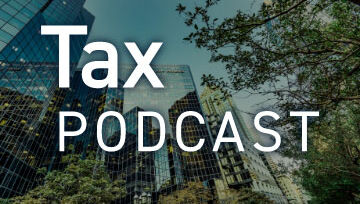January 2025 Update: Exciting Changes in Virginia R&D Tax Credit Awards
Recent developments in Virginia’s Research and Development (R&D) tax credit program have led to surprising outcomes for applicants. Historically, businesses were awarded roughly one-third to one-half of the credit amount for which they applied. Recent data, however, shows that applicants are now receiving awards far exceeding the $45,000 cap due to the recent legislative changes that increased the minor R&D credit pool.
Taxpayers are reporting awards as high as $60,000, marking a substantial increase in benefit. This means applicants are seeing returns more than one-third higher than the cap. Given these changes, it is important for businesses to apply for Virginia R&D credits and take advantage of these refundable credits. The 2024 VA R&D credit application deadline for both the minor credit and the major credit is September 1, 2025.
Overview of Virginia's R&D Tax Credit Modifications
Virginia recently passed House Bill 1518 (HB 1518), which Governor Glenn Youngkin signed, in April 2024. This law modified the commonwealth’s Research and Development Expenses Tax Credit (minor R&D Tax Credit) and the major Research and Development Expenses Tax Credit (major R&D Tax Credit). The new law aims to encourage innovation in Virginia by providing enhanced tax incentives to organizations that invest in qualified R&D activities.
R&D Credit vs. Major R&D Credit: What Is the Difference?
Virginia provides two different credit regimes for taxpayers investing in and conducting R&D in the commonwealth: The refundable minor R&D Tax Credit and the nonrefundable major R&D Tax Credit. Both credits aim to incentivize taxpayers to perform R&D activities in Virginia. Whichever credit applies is related to how many qualified research expenses (QREs) the taxpayer incurs during the tax year.
- Minor R&D Tax Credit: If a company incurs $5 million or less of QREs in a tax year, it could apply for this refundable R&D Tax Credit. This credit is equivalent to 15% of the first $300,000 of QREs incurred in the tax year that exceed the Virginia base amount and has an annual limit of $45,000. Any unused credits are refundable.
- If QREs were in conjunction with a Virginia public or private college or university, the credit is equivalent to 20% of the first $300,000 of qualified expenses that exceed the Virginia base amount.
- Major R&D Tax Credit: If a company incurs more than $5 million in QREs in a tax year, it could apply for the nonrefundable major R&D Tax Credit. This credit is equivalent to 10% of the difference between the current year’s QREs and 50% of the average amount of the QREs for the previous three years (and has no annual limit). The major R&D Tax Credit may only offset a maximum of 75% of the company’s taxable income, but any unused credits may be carried forward for up to 10 years.
Key Legislation Changes
Effective for tax years beginning on and after January 1, 2023, under the new law, the annual aggregate amount of minor R&D Tax Credits available has more than doubled and now stands at $15.77 million, up from $7.77 million. This means that businesses conducting R&D activities in Virginia may now avail themselves of more tax credits, making it more attractive for them to invest in R&D in Virginia. On the other hand, the annual aggregate amount of major R&D Tax Credits available was reduced to $16 million, down from $24 million.
Additionally, effective for tax years beginning on and after January 1, 2023, but before January 1, 2025, a step-rate structure applies to the major R&D Tax Credit. This structure allows organizations to claim a credit equal to 10% of the first $1 million and 5% more than $1 million of the difference between (I) any Virginia-qualified R&D expense paid or incurred by the taxpayer during the tax year and (II) 50% of the average Virginia qualified R&D expense paid or incurred by the taxpayer for the three tax years immediately preceding the tax year for which the credit is being determined.
Moreover, effective for tax years beginning on and after January 1, 2023, but before January 1, 2025, the new law also introduced a cap on the aggregate amount of major R&D Tax Credits allowed to be claimed by each taxpayer. This cap is set at $300,000 for the tax year, but it can be increased to $400,000 if the research was conducted in conjunction with a Virginia public or private institution of higher education. This cap aims to prevent abuse of the tax credit system while still incentivizing organizations to invest in R&D.
What Does This Mean for Your Business?
This new legislation alters how some of the credits are calculated and funded. These changes are expected to impact the tax advantages for companies that have benefitted from Virginia R&D Tax Credits in the past. The new legislation provides the potential for more lucrative benefits for small businesses. The application deadline is September 1, 2025.
Your Guide Forward
The Virginia R&D Tax Credit application deadline is September 1, 2025, and organizations need to be prepared as it will impact their tax planning and future R&D investment decisions. Cherry Bekaert’s R&D Tax Credits team is here to guide you. Our specialists can educate and advise you on these legislative changes and evaluate any impact they may have on your company.
Legislation concerning R&D Tax Credits is dynamic, both at the federal and state levels. It is crucial for businesses to stay abreast of new requirements and regulations. By leveraging these tax incentives through investments in R&D activities, companies can not only bolster their bottom line but also contribute to the state’s economic growth and development.
Reach out to a member of our team for a comprehensive review to help you take advantage of the R&D Tax Credit opportunities.






